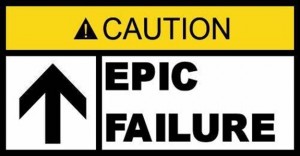In class we talked a lot about, entrepreneurship, from two entrepreneurs as guest speakers. Entrepreneurship always has that positive vibe to it, in that if one is successful in it, it can change their lives forever. It is always associated with the popular “million dollar story” of people who started out as the “average man” went on to achieve great milestones, in the end, reaching a high respectable position in society (e.g. Bill Gates, Richard Branson). However, very few focus on the negative aspects of the business (high risk of failing). In fact 75% or more businesses in Canada employ less than 100 people, so, it’s important to open our mind just a little and think realistically about the potential risk that they may face, and how this could seriously impact economy. Another fact that was mentioned in class by the guest speakers, was that there’s a 50/50 chance of a small business in Canada having a life expectancy of 5+ years. So, this adds even more to the fact that there is an importance attached to the need of focusing on the risk of this field rather than just the success stories.
The main problems leading to failure is starting business for the wrong reasons
– Profit is not the passion/driving force
– don’t want to be bossed around
– want free time vs. stamina to stick with it (free time not an option because you got to be on 24/7)
– poor management
– not enough capital
– location
– lack of planning (planning is obviously essential, when undergoing such a venture, especially with the risk attached, so a calculated method is necessary in order to minimize the risk as much as possible)
So, in the case of many entrepreneurial business, it is the issue of finding a unique value proposition. This is usually done by finding a problem first, but not just any problem, but a significant problem, to which the solution can attract a lot attention, demand, and hopefully in the long-run, profit and sustainability of the business.
So, what other entrepreneurial business can do to avoid the risk, or at least minimize it is to:
Find the problem
– do this first before finding the solution
– help to keep things moving forward
– looking at solutions from a problem based proposition
Entrepreneurship is an extremely flexible, ambiguous, and demanding, which is why such businesses probably fail, since they may not know the scope in which this particular field works.
Image
“Sign.” My Confined Space. Web. 23 Nov 2010

